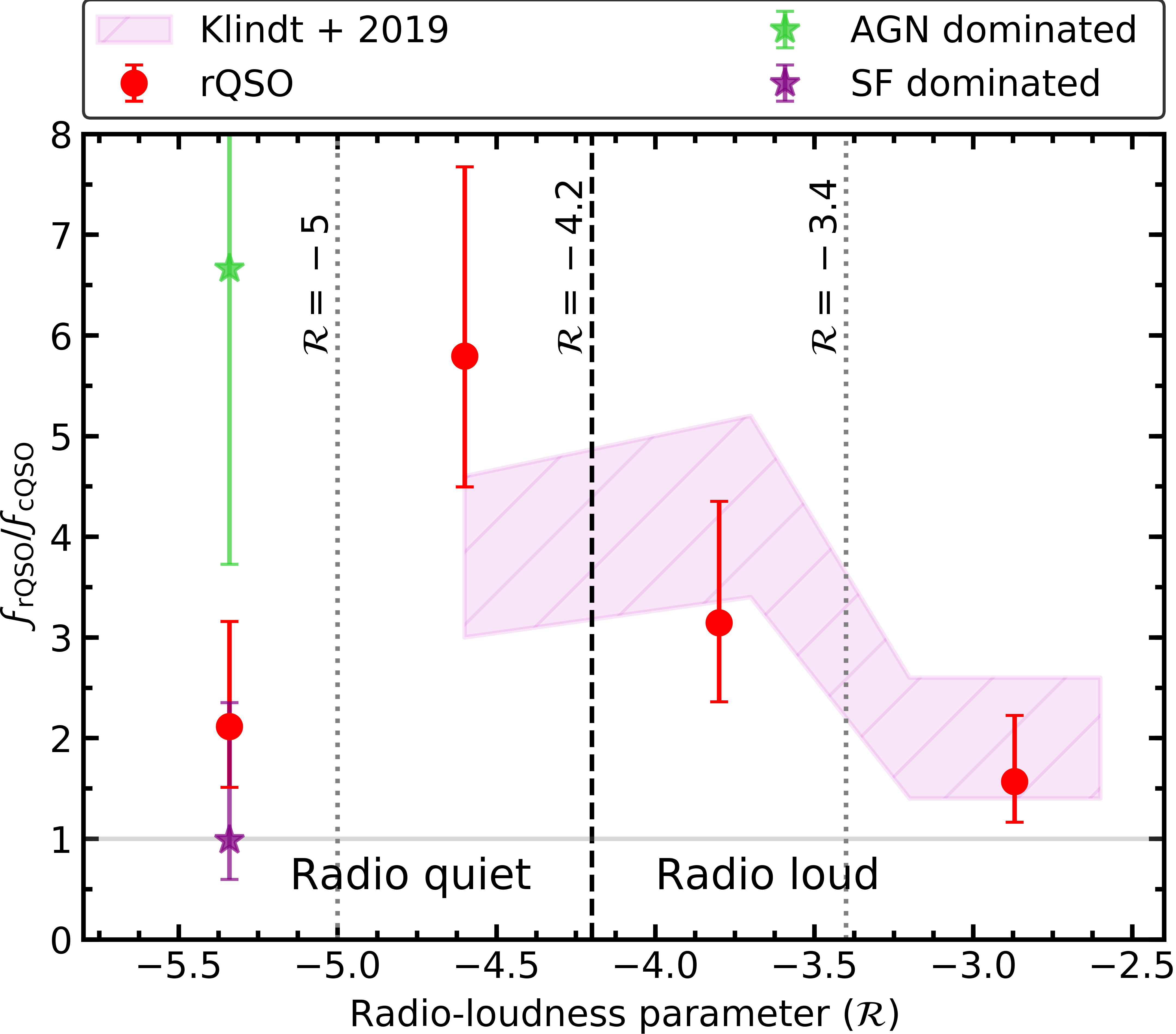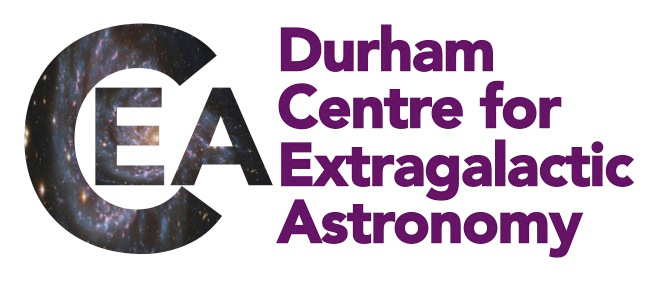CEA News, April 2020
Enhanced compact AGN radio emission in red quasars
The majority of the quasar population are blue at optical wavelengths, typically due to an obscured view of the supermassive black hole accretion disc. However, there is a small but significant subset with redder optical- infrared colours (coined as “red QSOs”). Although well studied in the literature, the exact nature of red quasars remains unclear. The origin of the red colours is believed to be dust, although it is uncertain whether this is on host-galaxy or nuclear scales.

Using very deep radio data we further explore our results from Klindt et al. 2019 (press release: Astronomers reveal true colours evolving galactic beasts) who found fundamental differences in the faint images of the Radio Sky at Twenty-centimeters (FIRST) radio properties of red quasars when compared to typical blue quasars. In Fawcett et al. (2020), we find that these fundamental differences are due to compact AGN-driven radio emission around the radio-quiet-radio-loud threshold.
In our new paper, we use high spatial resolution, deep radio data from the Very Large Array (VLA) Stripe 82 (S82) and VLA-COSMOS 3 GHz (C3GHz) surveys. Looking at the radio detection fraction, we find an enhancement in the red quasars down to the depth of C3GHz (approximately 30 times deeper than FIRST), although with low source statistics. We also find this enhancement arises from systems with compact radio morphologies, on scales approximately less than 40 kpc (at z = 1.5), indicating that they occur on scales less than or equal to that of the host galaxy.
A key question is, what is the origin of the compact radio emission: AGN activity or star-formation? To answer this we explore the radio-loudness parameter (R; defined as the 1.4 GHz luminosity to 6µm luminosity ratio), where we find the enhancement peaks around the radio-quiet threshold (R=-4.2; in agreement with Klindt et al. 2019). Using the deep C3GHz data we can now push to much lower values of R, where we find a decrease in the radio-detection enhancement (also seen in our companion study; Rosario et al. 2020). Using infrared (IR) data in the COSMOS field, we can define the origin of the radio emission in a quasar as dominated by star-formation if the measured radio luminosity is within a factor of 3 of the 1:1 radio-far-IR relationship and AGN-dominated otherwise. Using this information, we can split the lowest R bin into sources that are star-formation or AGN dominated (see Figure). We find that the enhancement in the star-formation dominated sources is consistent with unity while the enhancement in the AGN-dominated sources is consistent with that seen at higher values of R, although with large uncertainties. This suggests that the decrease in the enhancement seen at R< -5 could be due to an increase in the relative contribution to the radio emission from star-formation as the AGN component becomes comparably weak. Our results therefore strongly argue that the enhancement in red quasars is due to compact radio AGN emission.
We're now planning a future ALMA study which will help us to cleanly measure the star-formation contribution to further explore the contributions from star formation and AGN.

